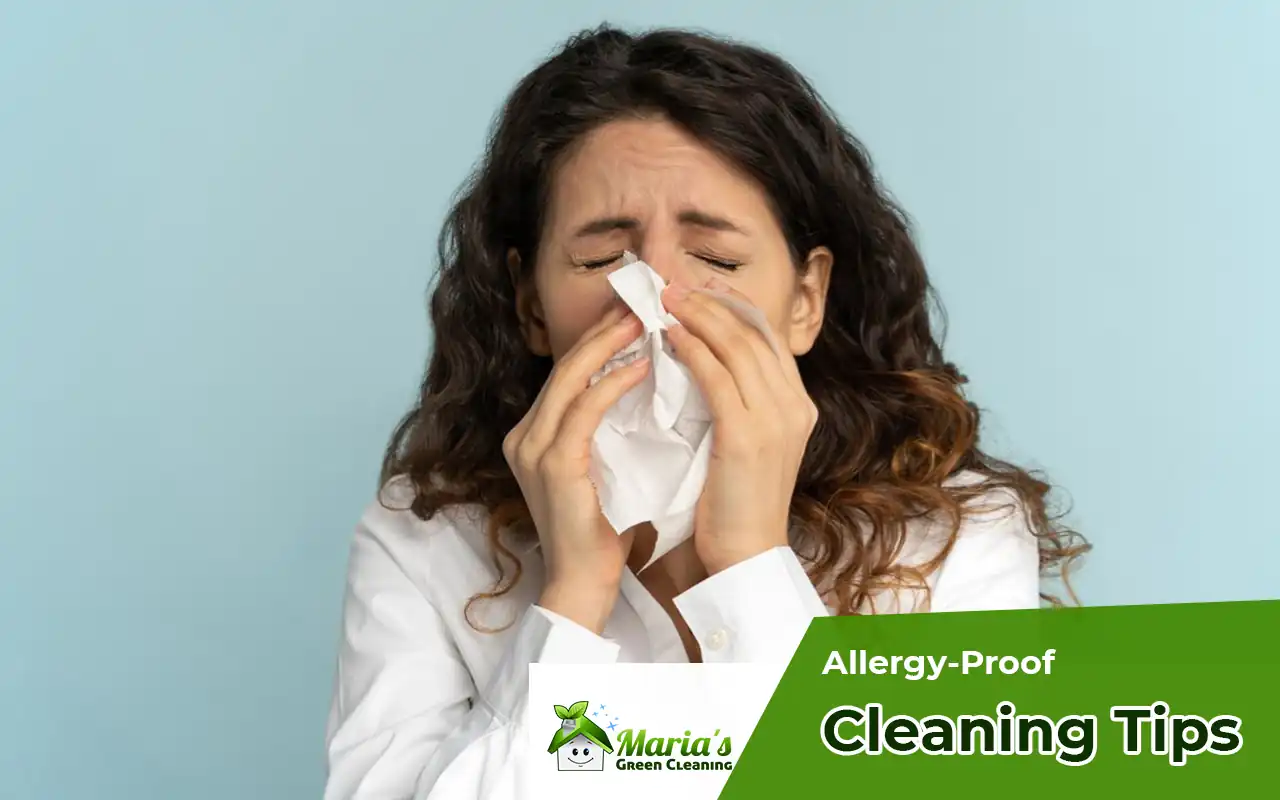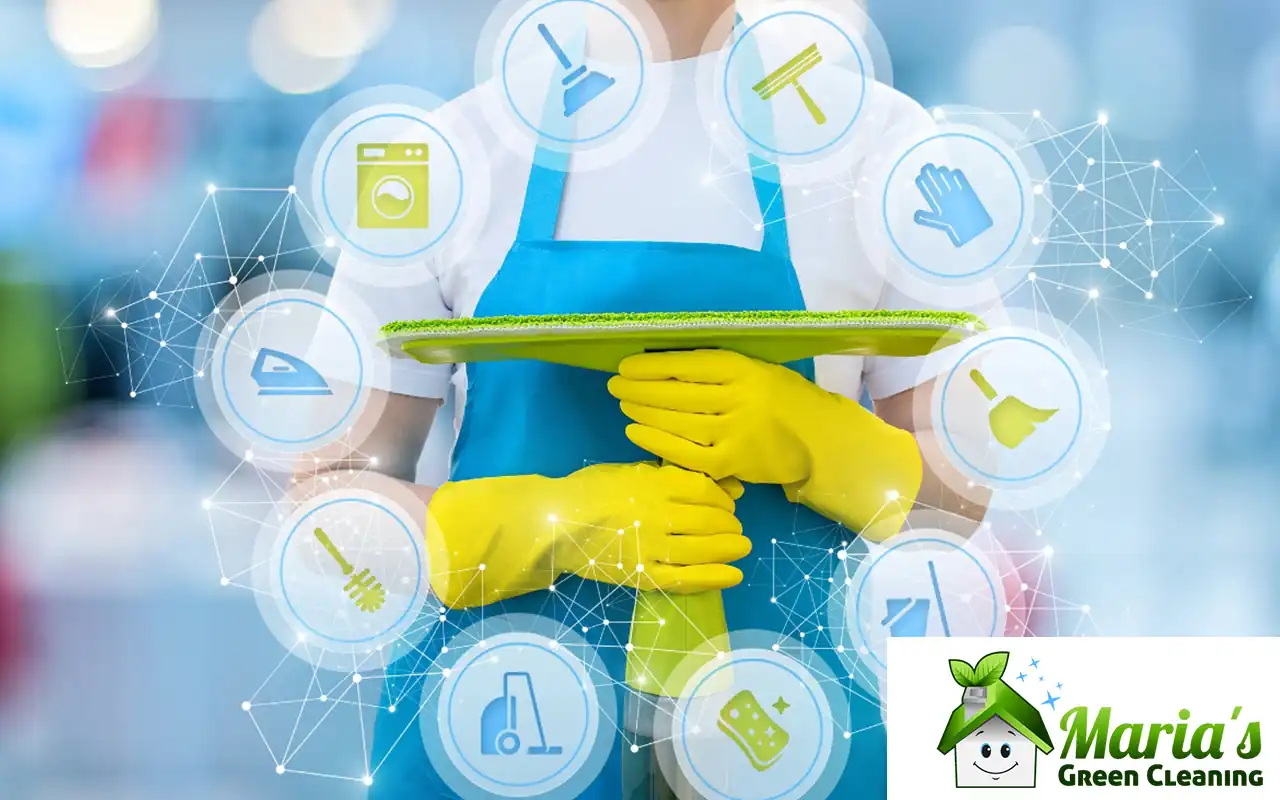
Allergy-Proof Cleaning: Tips for a Fresh, Healthy Home
Keeping your home free of allergens can feel challenging, but these allergy-proof cleaning tips make it much easier. For anyone with allergies, a clean house isn’t just about appearances—it’s about breathing easier. When you reduce allergens, you create a healthier, fresher environment for everyone. With the right approach, maintaining an allergy-friendly home becomes simple. Follow these tips to enjoy a space that’s both welcoming and allergy-proof.
Allergy-Proof Cleaning Tips for a Healthier Home
1. Start with an Allergy-Free Home Plan
Creating an allergy-free space starts with a strategic cleaning plan. Focus on areas that collect dust, pet hair, and mold. Rooms like the living room, bedroom, and kitchen are often allergen hotspots that require regular attention. By establishing a routine, you’re cleaning and actively preventing allergen buildup that can compromise your air quality and comfort.
- Living Room: Dust often settles on bookshelves, entertainment centers, and coffee tables. Using a microfiber cloth can help capture dust rather than spreading it around. For furniture, try vacuuming upholstered surfaces weekly to minimize dust and pet dander buildup.
- Bedroom: The bedding, pillows, and mattresses should be cleaned regularly. Consider washing bed linens in hot water at least once a week to kill dust mites. Vacuum under the bed, as dust often settles in these hidden spots.
- Kitchen: The kitchen is another area that collects particles due to food prep and moisture. Wipe down all surfaces, including cabinets and countertops, to prevent dust and mold. You’ll also want to keep the floors clean by sweeping and mopping to prevent allergen accumulation.
With this plan in place, you’ll stay on top of allergens before they become an issue, making your home a safer and healthier environment.
2. Improve Air Quality with Clean Air Tips
Indoor air quality is essential for allergy relief and a healthy home. First, air filters must be regularly replaced, as they capture dust, pollen, and other airborne allergens. Experts recommend replacing these filters every 3-4 months, but if you have pets or live in a high-pollen area, consider replacing them even more frequently.
Adding air purifiers to your home can be a game changer, especially for bedrooms and living areas. Air purifiers with HEPA filters capture airborne allergens that may be too small for regular filters to catch. Running a purifier continuously can keep these particles at bay, reducing allergy symptoms over time.
Additionally, don’t overlook vents and fans, which accumulate dust and pet dander. Clean these areas monthly by removing vent covers and wiping down the fan blades. Ensuring good ventilation in high-humidity areas, such as the bathroom, can also prevent mold buildup that often triggers allergies. By keeping the air flowing and clean, you significantly reduce allergy triggers, creating a fresher indoor environment.

3. Tackle Hypoallergenic Cleaning Methods
Switching to hypoallergenic cleaning products can make a world of difference for those who are allergy-sensitive. Many conventional products contain strong perfumes or chemicals that can worsen allergy symptoms. Hypoallergenic products are typically fragrance-free and formulated without harsh ingredients, making them gentler on sensitive skin and respiratory systems.
When choosing hypoallergenic cleaners, opt for those labeled “free and clear.” These products avoid common irritants, like synthetic fragrances and dyes, that can trigger reactions. Look for products with minimal ingredients; they’re usually more tolerable for allergy-prone individuals.
Another tip is to use a vacuum with a HEPA filter, which captures fine particles and allergens from floors and surfaces. Be sure to vacuum carpets, rugs, and even furniture to reduce allergens like dust mites and dander. With hypoallergenic cleaning methods, you create a comfortable home without the extra risk of triggering allergic reactions.
4. Focus on Natural Cleaning for Allergies
For an allergy-proof home, natural cleaning methods offer a safe alternative to chemical-based products. Everyday items like baking soda and vinegar are powerful and effective cleaning agents that help maintain a healthy environment.
- Baking Soda: This versatile cleaner is great for scrubbing sinks, tubs, and other surfaces. Its mild abrasiveness removes grime without leaving behind residues that could trigger allergies.
- Vinegar: Known for its ability to dissolve hard water stains and neutralize odors, vinegar is ideal for cleaning bathrooms and kitchens. It’s safe to use on various surfaces and leaves a fresh, neutral scent.
For bathroom and kitchen areas, where moisture can lead to mold and mildew, these natural cleaners can be particularly useful. Simply spray a vinegar and water mixture on surfaces, let it sit, and wipe clean. This method cleans effectively without releasing strong scents or residues that may affect air quality. Using natural cleaners also makes cleaning routines more manageable and allergy-friendly.
5. Avoiding Allergens in Fabrics and Upholstery
Soft surfaces in the home, like upholstery and fabrics, often trap dust, pet dander, and other allergens. By keeping these items clean, you minimize allergy triggers in everyday spaces. Begin by washing bedding, curtains, and cushion covers every 1-2 weeks. For larger fabric items, such as rugs and upholstery, use a vacuum with a HEPA filter to thoroughly clean surfaces.
Additionally, hypoallergenic pillow and mattress covers act as barriers, reducing dust mite exposure. These covers are especially helpful in the bedroom, where dust mites are common. Consider encasing pillows and mattresses with these covers to create an allergy-safe zone for sleep. Regularly washing pet bedding is also important, as dander and allergens can easily spread. Keeping fabrics clean helps you maintain an allergy-free environment.
FAQ: Common Questions on Allergy-Proof Cleaning Tips
- What is the best way to keep an allergy-free home?
- Focus on frequently cleaning areas prone to dust, such as bedrooms and living rooms. Use hypoallergenic products to limit irritation.
- How often should I replace air filters to keep the air clean?
- Replace filters every 3-4 months. In homes with pets or high pollen levels, change filters every 2 months for best results.
- Can natural cleaning methods really help reduce allergens?
- Yes! Natural cleaners like baking soda and vinegar are effective and reduce the likelihood of triggering allergies due to their mild nature.
- Should I wash my pet’s bedding often to reduce allergens?
- Absolutely. Washing pet bedding weekly helps minimize dander in the home, making it easier to manage allergy symptoms.
- What should I avoid when choosing cleaning products for an allergy-proof home?
- Avoid products with fragrances, dyes, and harsh chemicals, as they can irritate the respiratory system. Hypoallergenic or fragrance-free options are safer.
Ready for an Allergy-Free Oasis? Contact Us Today!
By following these allergy-proof cleaning tips, you’ll create a home that feels fresh, welcoming, and comfortable for everyone. For help maintaining an allergy-friendly environment, call us at (914) 299-2563. Our team covers New York City, Westchester County, NY, and Fairfield County, CT, to keep your home as healthy and allergen-free as possible.
Let’s make your space a haven for easy breathing and easy living!
